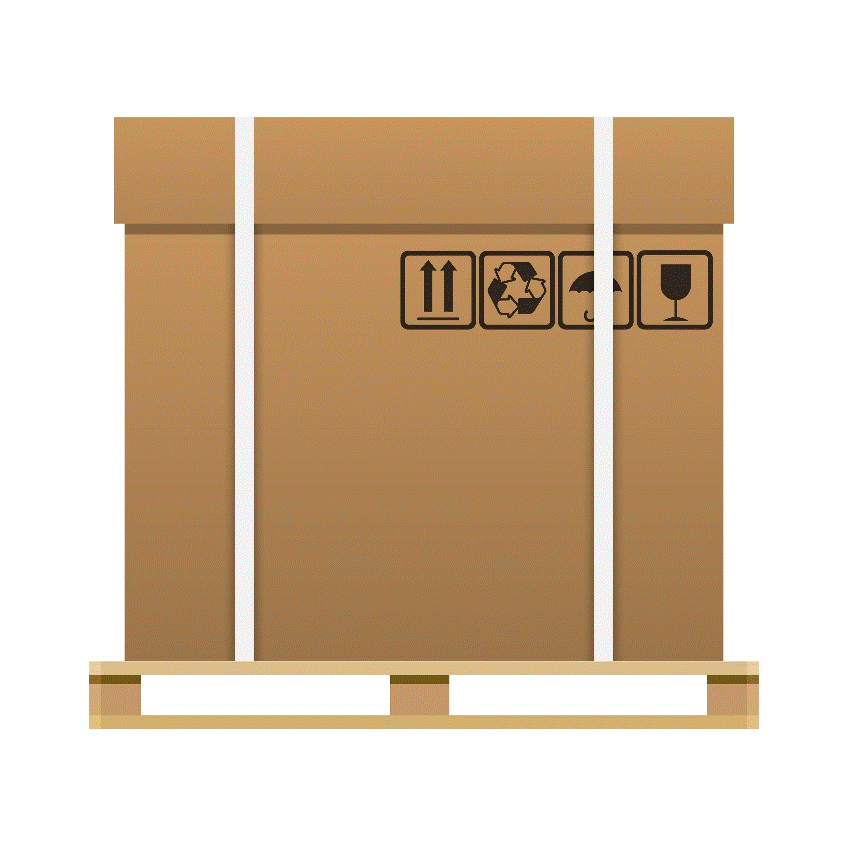Edge protectors are an important part of good packing and pallet delivery, but they also play a role in improving the ecological profile of the shipping and logistics industries.
If you’ve been packing your pallets without edge protection, you should reevaluate your processes. Even if all your shipments have thus far arrived safely and without damage, you cannot count on that always being the case. After all, a delivery can go through as many as six vehicle changes in one trip, so there’s room for accidents along the way.
Wrapping and strapping are also important, but the top boxes in a pallet can end up being crushed or ripped by their own ratchet straps. Trust us: it’s not a pretty sight. The stress on corners will cause ratchet straps to lose their tension. Adding protection under all points where the straps go over the edge of the stack will help prevent damage to the boxes and help the straps retain tension. Note that in the accompanying illustration, there is no edge protection under those straps – that’s not what your shipment should look like.
Potential strap damage is another reason to always put your heaviest items on the bottom. The top boxes in a stack are subjected to repetitive shocks at greater force than the bottom ones, so a top-heavy load is a damaged shipment waiting to happen.
Remember that your load is not the only one in the truck, and vertical edge protection will keep your shipments safe if loads around them topple over. Horizontal protection across the top edges and flat surfaces creates even weight distribution when pallets get stacked in trucks and warehouses.
The sustainability points are earned down the road, so to speak, as being able to stack multiple pallet loads in trucks saves significant fuel and trips required. As a result, it also saves on fuel costs and can keep the prices down on pallet delivery over time.
You can buy corner boards in many types of materials, including plastic and wood, but the most environmentally friendly versions are made of recycled paper and biodegradable, with water-based adhesive between the layers.
When purchasing protective materials, take into account the packed pallet’s length, width and total weight, and ask your packaging supplier for their recommendations for dimensions and crush capacity.

